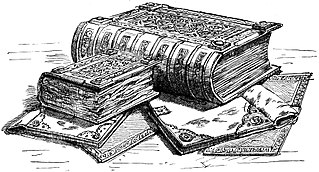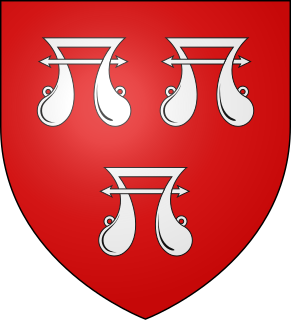| Rishangles | |
|---|---|
 St Margaret's Rishangles: the former church, now a private residence | |
Location within Suffolk | |
| Population | 80 [1] |
| District | |
| Shire county | |
| Region | |
| Country | England |
| Sovereign state | United Kingdom |
| Post town | Eye |
| Postcode district | IP23 |
| Police | Suffolk |
| Fire | Suffolk |
| Ambulance | East of England |
| EU Parliament | East of England |
Rishangles is a village and civil parish in the Mid Suffolk district of Suffolk in eastern England.

In England, a civil parish is a type of administrative parish used for local government, they are a territorial designation which is the lowest tier of local government below districts and counties, or their combined form, the unitary authority. Civil parishes can trace their origin to the ancient system of ecclesiastical parishes which historically played a role in both civil and ecclesiastical administration; civil and religious parishes were formally split into two types in the 19th century and are now entirely separate. The unit was devised and rolled out across England in the 1860s.

Mid Suffolk is a local government district in Suffolk, England. Its council was based in Needham Market until late 2017, and are currently sharing offices with the Suffolk County Council at their headquarters in Ipswich. The largest town of Mid Suffolk is Stowmarket. The population of the District taken at the 2011 Census was 96,731.

Suffolk is an East Anglian county of historic origin in England. It has borders with Norfolk to the north, Cambridgeshire to the west and Essex to the south. The North Sea lies to the east. The county town is Ipswich; other important towns include Lowestoft, Bury St Edmunds, Newmarket, and Felixstowe, one of the largest container ports in Europe.
The place-name 'Rishangles' is first attested in the Domesday Book of 1086, where it appears as Risangra. The name means 'brushwood slope', the second element being related to the word 'hanger' meaning 'hanging wood'. [2]

Domesday Book is a manuscript record of the "Great Survey" of much of England and parts of Wales completed in 1086 by order of King William the Conqueror. The Anglo-Saxon Chronicle states:
Then, at the midwinter [1085], was the king in Gloucester with his council .... After this had the king a large meeting, and very deep consultation with his council, about this land; how it was occupied, and by what sort of men. Then sent he his men over all England into each shire; commissioning them to find out "How many hundreds of hides were in the shire, what land the king himself had, and what stock upon the land; or, what dues he ought to have by the year from the shire."
The manor of Rishangles was held until his death in September 1478 by Edward Grimston, who also held the manor of Thorndon. They passed to his son Edward (1462-1520). Edward Grimston was well-connected, and his third marriage (1471) to Philippa, daughter of John Tiptoft, 1st Baron Tiptoft and sister of the Earl of Worcester was held in the presence of John de la Pole, 2nd Duke of Suffolk and his wife Elizabeth Plantagenet, sister of Kings Edward IV and Richard III. [3]

John Tiptoft, 1st Baron Tiptoft was a Knight of the Shire for Huntingdonshire and Somerset, Speaker of the House of Commons, Treasurer of the Household, Chief Butler of England, Treasurer of the Exchequer and Seneschal of Landes and Aquitaine.

John Tiptoft, 1st Earl of Worcester KG was an English nobleman and scholar, Lord High Treasurer, Lord High Constable and Deputy Governor of Ireland. He was known as "the Butcher of England".

John de la Pole, 2nd Duke of Suffolk, KG, was a major magnate in 15th-century England. He was the son of William de la Pole, 1st Duke of Suffolk, and Alice Chaucer, the daughter of Thomas Chaucer. His youth was blighted, in 1450, by the political fall and subsequent murder of his father, who had been a favourite of the king, Henry VI, but was increasingly distrusted by the rest of the nobility. Although the first duke of Suffolk had made himself rich through trade and – particularly – royal grants, this source of income dried up on his death, so John de la Pole was among the poorest of English dukes on his accession to the title in 1463. This was a circumstance which John felt acutely; on more than one occasion, he refused to come to London due to his impoverishment being such that he could not afford the costs of maintaining a retinue.
Located around seven miles south of Diss, in 2005 its population was 80. [1] At the 2011 the population was included in the civil parish of Bedingfield. Despite its small population the village is at one time believed to have been home to three churches. Following the closure of both the Methodist church and the Grade II* listed Parish church, St Margaret's, only the Baptist Church remains open.

Diss is an English market town and electoral ward in the East Anglian county of Norfolk, near the border with Suffolk. It had a population of 7,572 in 2011. Diss railway station is on the Great Eastern Main Line from London to Norwich. The town lies in the valley of the River Waveney, round a mere covering 6 acres (2.4 ha) and up to 18 feet (5.5 m) deep, although there is another 51 feet (16 m) of mud.

Bedingfield is a village and civil parish in the Mid Suffolk district of Suffolk, England. Rishangles and Southolt were included in the population at the 2011 Census.

















